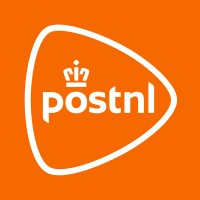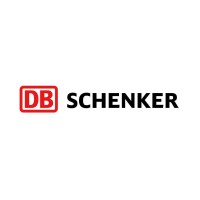
GEODIS Company Cyber Security Posture
geodis.comGEODIS is a leading global logistics provider acknowledged for its expertise across all aspects of the supply chain. As a growth partner to its clients, GEODIS specializes in four lines of business: Global Freight Forwarding, Global Contract Logistics, Distribution & Express Transport, and European Road Network. With a global network spanning nearly 170 countries and more than 49,400 employees, GEODIS is ranked no. 5 in its sector across the world. In 2022, GEODIS generated €13.7 billion in revenue. GEODIS is a company owned by SNCF group.
GEODIS Company Details
geodis
28896 employees
719894.0
none
Transportation, Logistics, Supply Chain and Storage
geodis.com
Scan still pending
GEO_5081113
In-progress
Between 200 and 800
This score is AI-generated and less favored by cyber insurers, who prefer the TPRM score.
 GEODIS Global Score
GEODIS Global Score.png)

GEODIS Company Scoring based on AI Models
| Model Name | Date | Description | Current Score Difference | Score |
|---|---|---|---|---|
| AVERAGE-Industry | 03-12-2025 | This score represents the average cybersecurity rating of companies already scanned within the same industry. It provides a benchmark to compare an individual company's security posture against its industry peers. | N/A | Between 200 and 800 |
GEODIS Company Cyber Security News & History
| Entity | Type | Severity | Impact | Seen | Url ID | Details | View |
|---|
GEODIS Company Subsidiaries

GEODIS is a leading global logistics provider acknowledged for its expertise across all aspects of the supply chain. As a growth partner to its clients, GEODIS specializes in four lines of business: Global Freight Forwarding, Global Contract Logistics, Distribution & Express Transport, and European Road Network. With a global network spanning nearly 170 countries and more than 49,400 employees, GEODIS is ranked no. 5 in its sector across the world. In 2022, GEODIS generated €13.7 billion in revenue. GEODIS is a company owned by SNCF group.
Access Data Using Our API

Get company history
.png)
GEODIS Cyber Security News
Driving the Future: GEODIS’ Strategic Vision for Sustainable Logistics by 2027
GEODIS, a global leader in transport and logistics, has unveiled its latest strategic blueprint, Ambition 2027, charting a bold course for ...
News Guard against cyber-attacks warning, as UK haulier data appears on 'dark web'
A ransomeware cyberattack on a UK company has demonstrated the very real threat that companies face in an increasingly digital world.

GEODIS Similar Companies

PT Pos Indonesia (Persero)
Pos Indonesia is an Indonesian state-owned company (BUMN) engaged in postal services. Pos Indonesia was appointed by the government to be the national logistics platform for its wide and comprehensive network that spreads throughout Indonesia. Pos Indonesia was established in Jakarta on August 26,

MSC Mediterranean Shipping Company
MSC is a privately owned global shipping company founded in 1970 by Gianluigi Aponte. As one of the world’s leading container shipping lines with headquarters in Geneva, Switzerland, MSC operates in over 675 offices across more than 155 countries worldwide with over 200,000 MSC Group employees. With

Transnet SOC Ltd
As the custodian of ports, rail and pipelines, Transnet’s objective is to ensure a globally competitive freight system that enables sustained growth and diversification of the country’s economy. As a state-owned company, Transnet continues to leave an indelible mark on the lives of all South Afri

Österreichische Post AG
Die Österreichische Post AG ist ein international tätiger Post-, Logistik- und Dienstleistungskonzern mit herausragender Bedeutung für Österreich. Konzernweit erwirtschaftete die Post im Jahr 2024 mit ihren rund 28.000 Mitarbeiter*innen einen Jahresumsatz von über 3,1 Mrd EUR. In Österreich umfasst

PostNL
Welcome! We are PostNL. Your favorite delivery service is what we want to be. Every day, over 35,000 colleagues work hard to achieve this goal, on your streets and in your neighborhood, in our sorting centers and depots, and at the office. On an average day, we deliver about 1.1 million packages and

DB Schenker
At DB Schenker, we're not just about logistics; we're about understanding what truly matters to you. As a global leader in transportation and logistics, we're dedicated to supporting industries and businesses worldwide in the seamless exchange of goods. Our integrated approach ensures that every ste

Frequently Asked Questions
Explore insights on cybersecurity incidents, risk posture, and Rankiteo's assessments.
GEODIS CyberSecurity History Information
How many cyber incidents has GEODIS faced?
Total Incidents: According to Rankiteo, GEODIS has faced 0 incidents in the past.
What types of cybersecurity incidents have occurred at GEODIS?
Incident Types: The types of cybersecurity incidents that have occurred include .
Incident Details
What are the most common types of attacks the company has faced?
Additional Questions
What Do We Measure?
















Every week, Rankiteo analyzes billions of signals to give organizations a sharper, faster view of emerging risks. With deeper, more actionable intelligence at their fingertips, security teams can outpace threat actors, respond instantly to Zero-Day attacks, and dramatically shrink their risk exposure window.
These are some of the factors we use to calculate the overall score:
Identify exposed access points, detect misconfigured SSL certificates, and uncover vulnerabilities across the network infrastructure.
Gain visibility into the software components used within an organization to detect vulnerabilities, manage risk, and ensure supply chain security.
Monitor and manage all IT assets and their configurations to ensure accurate, real-time visibility across the company's technology environment.
Leverage real-time insights on active threats, malware campaigns, and emerging vulnerabilities to proactively defend against evolving cyberattacks.




